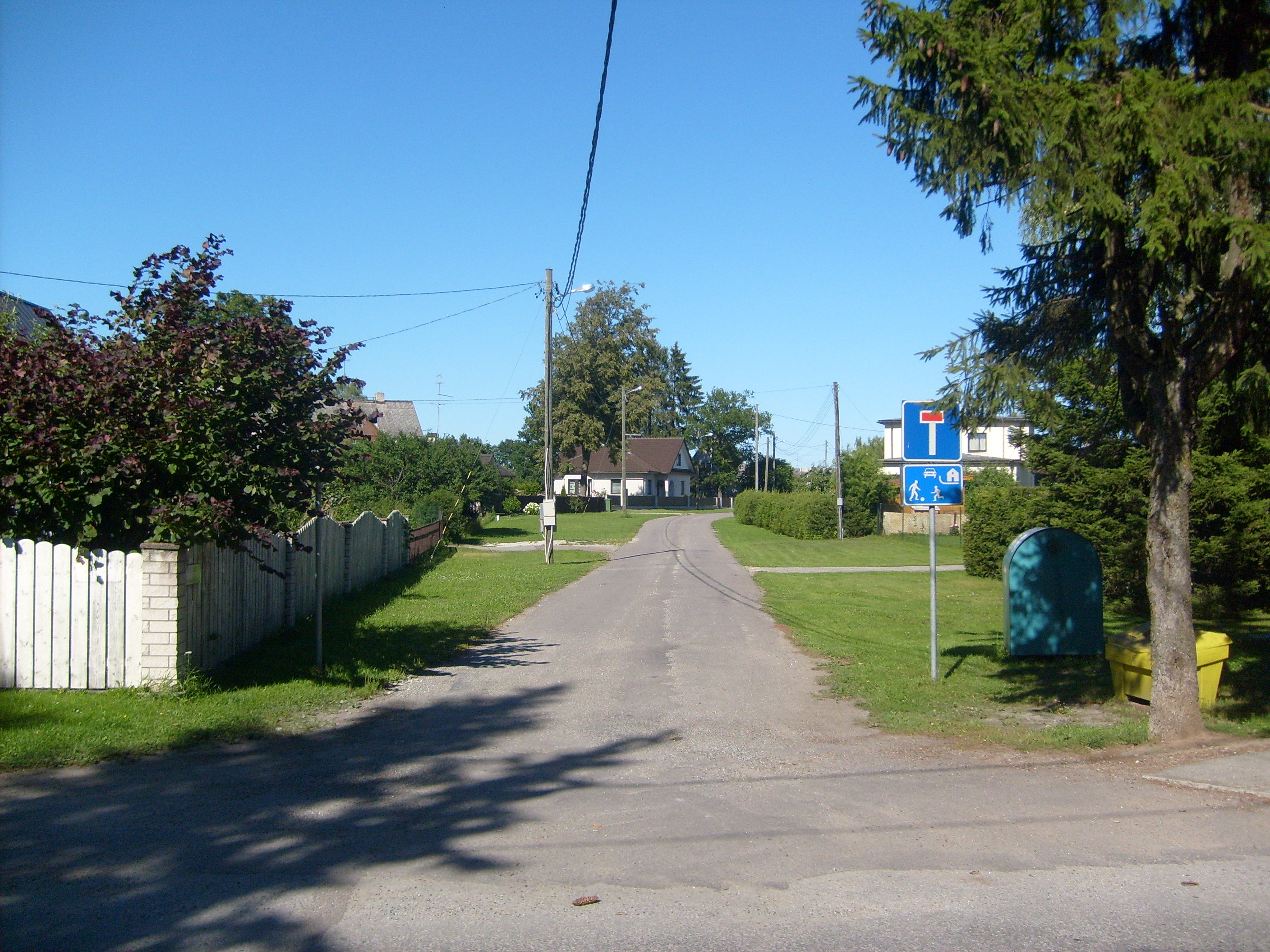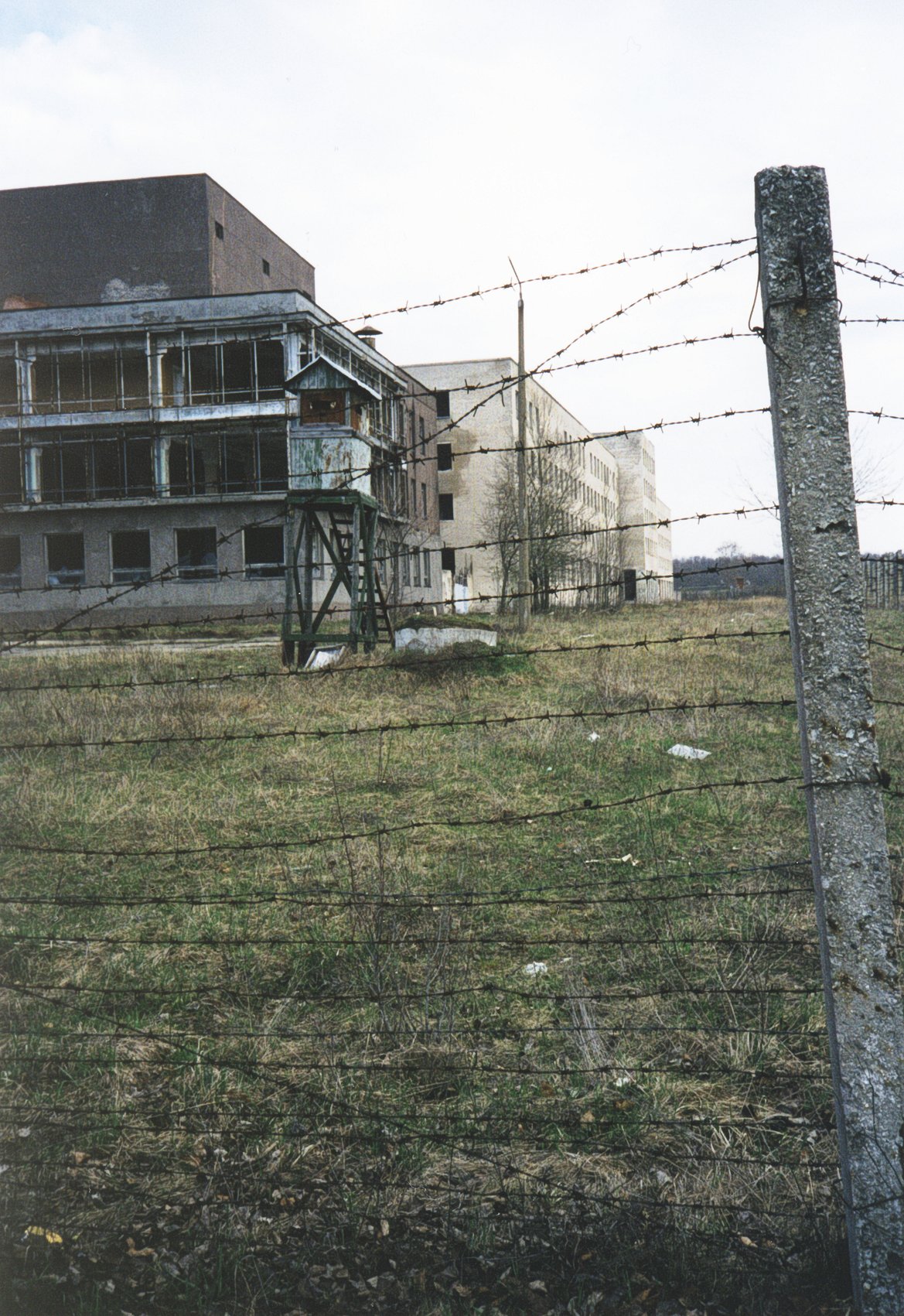|
Koidu, Harju County
Koidu is a village in Saue Parish, Harju County in northern Estonia. (retrieved 27 July 2021) It's located southwest of Estonian capital Tallinn (about from the city centre), just next to Laagri, the administrative centre of the municipality. The town of Saue is situated about southwest. Koidu is bordered by the Vääna River to the southwest and by the Tallinn– Keila–Paldiski Paldiski is a town and Baltic Sea port situated on the Pakri Peninsula of northwestern Estonia. Since 2017, it's the administrative centre of Lääne-Harju Parish of Harju County. Previously a village of Estonia-Swedes known by the historical ... railway to the southeast. There's a railway station named "" in Koidu village. Koidu village was established on 16 July 2012 by detaching the land from Alliku village. The initiative came from the local community. References Villages in Harju County 2012 establishments in Estonia Populated places established in 2012 {{harju-geo- ... [...More Info...] [...Related Items...] OR: [Wikipedia] [Google] [Baidu] |
Populated Places In Estonia
Populated places in Estonia Estonia, formally the Republic of Estonia, is a country by the Baltic Sea in Northern Europe. It is bordered to the north by the Gulf of Finland across from Finland, to the west by the sea across from Sweden, to the south by Latvia, and t ... (officially: settlement units), are cities or settlement units of rural municipalities, but only cities have administrative functions. Settlement units are divided into settlements and urban regions et, asum (subdivisions of cities). Officially there are five types of settlement units in Estonia: *town/city ( et, linn) *town without municipal status () *borough () *small borough () *village () See also * Municipalities of Estonia * List of cities and towns in Estonia * Counties of Estonia Notes External links Place Names Board of Estonia [...More Info...] [...Related Items...] OR: [Wikipedia] [Google] [Baidu] |
Saue
Saue is a town in north-western Estonia. It's the administrative centre of Saue Parish in Harju County. The territory of Saue is and population about 5,800. Closest centres are Tallinn (), Keila (), Saku () and Laagri (). Geography Saue is located at a very favourable position near Tallinn, the capital of Estonia. It lures a lot of moderately wealthy people who like the balance between the small town and big city atmosphere. While Saue is close to nature, it still provides the kinds of entertainment, jobs, and other big city amenities that Tallinn has to offer. History *1620s – Saue manor (''Klein-Sauß'') was established *1792 - The current manor house was built *1870 - The Saint Petersburg–Tallinn–Paldiski railway passing Saue was completed *1920s – Garden settlement started to arise *1960s – Saue was united with Tallinn *1973 – Saue, still part of Tallinn, gained a borough (''alev'') status *1993 – Saue was granted the town rights *1994 – Saue was s ... [...More Info...] [...Related Items...] OR: [Wikipedia] [Google] [Baidu] |
Villages In Harju County
A village is a clustered human settlement or community, larger than a hamlet but smaller than a town (although the word is often used to describe both hamlets and smaller towns), with a population typically ranging from a few hundred to a few thousand. Though villages are often located in rural areas, the term urban village is also applied to certain urban neighborhoods. Villages are normally permanent, with fixed dwellings; however, transient villages can occur. Further, the dwellings of a village are fairly close to one another, not scattered broadly over the landscape, as a dispersed settlement. In the past, villages were a usual form of community for societies that practice subsistence agriculture, and also for some non-agricultural societies. In Great Britain, a hamlet earned the right to be called a village when it built a church. [...More Info...] [...Related Items...] OR: [Wikipedia] [Google] [Baidu] |
Institute Of The Estonian Language
Institute of the Estonian Language ( et, Eesti Keele Instituut) is the language regulator of the Estonian language. It is located in Tallinn Tallinn () is the most populous and capital city of Estonia. Situated on a bay in north Estonia, on the shore of the Gulf of Finland of the Baltic Sea, Tallinn has a population of 437,811 (as of 2022) and administratively lies in the Harju '' .... Its current director is Arvi Tavast. It was founded in 1993 as the Institute of Language and Literature was reorganized. Directors * Asta Õim * Urmas Sutrop * Tõnu Tender * Arvi Tavast References External links * Language regulators Estonian language {{Uralic-lang-stub ... [...More Info...] [...Related Items...] OR: [Wikipedia] [Google] [Baidu] |
Alliku, Harju County
Alliku is a village in Saue Parish, Harju County in northern Estonia Estonia, formally the Republic of Estonia, is a country by the Baltic Sea in Northern Europe. It is bordered to the north by the Gulf of Finland across from Finland, to the west by the sea across from Sweden, to the south by Latvia, and t .... Padula railway station on the Elron western route is located there. References Villages in Harju County {{Harju-geo-stub ... [...More Info...] [...Related Items...] OR: [Wikipedia] [Google] [Baidu] |
Paldiski
Paldiski is a town and Baltic Sea port situated on the Pakri Peninsula of northwestern Estonia. Since 2017, it's the administrative centre of Lääne-Harju Parish of Harju County. Previously a village of Estonia-Swedes known by the historical name ''Rågervik'', it was extended into a Russian naval base in the 18th century. The Russian authorities renamed it ''Балтийский Порт'' ("Baltiyskiy Port", i.e., Baltic Port, german: Baltisch-Port) in 1762. In written Estonian, the name was spelled ''Baltiski'' until 1933, when the phonetically spelled version ''Paldiski'' became official. History Swedish Empire Paldiski was founded as a fishing village by Estonian Swedes with the name Rågervik. Russian Empire Peter the Great chose the location in 1715 for a naval base, and construction started in 1716. It was meant to be a sea fortress and in 1790, during the Russo-Swedish War, it was conquered by the Swedes through trickery, when a Swedish warship sailing un ... [...More Info...] [...Related Items...] OR: [Wikipedia] [Google] [Baidu] |
Keila
Keila (german: Kegel) is a town and an urban municipality in Harju County in north-western Estonia, 25 km southwest of Tallinn. Keila is also the location of administrative buildings of the surrounding Keila Parish, a rural municipality separate from the town itself. History The oldest traces of human settlement in Keila trace back 2000 to 3000 years BC. Around 1000 years ago the village of Keila was established along the Keila river. In 1219 the Danish conquered Northern-Estonia and chose Keila as the site on which the Vomentakæ parochial Revala county church was to be built. The first church was a small wooden structure dedicated primarily to St. Michael which was replaced with a stone church at the end of the 13th century. Subsequently, the first written mention of Keila (''Keikŋl'') comes from Danish evaluation book writings in 1241. In the 15th-16th century, a settlement comprising some tens of buildings and a hundred people formed around the church. At the same t ... [...More Info...] [...Related Items...] OR: [Wikipedia] [Google] [Baidu] |
Vääna River
Vääna (german: Feyena, Faehna, Fähna) is a village in Harku Parish, Harju County in northern Estonia. It has a population of 266 (as of 1 June 2010). Vääna is located about from the capital Tallinn. Vääna Manor The oldest recorded mention of the place (''Feyena'') has been dated to 1325. At this time, there was a fortified manor or a castle at the site, the remains of which were reconstructed and expanded in a romantic fashion during the 19th century but are still visible in the manor park. The present manor house was commissioned by the Baltic German von Stackelberg family and built 1784-1797. It was designed by an anonymous Italian architect in late baroque style. The wings of the long main house have circular pavilions with preserved decorated vaulted roofs, where formerly the family displayed their art collection, which reputedly held works by Hans Holbein, Nicolas Poussin, Claude Lorrain and Antoine Watteau . The main building also showcases some preserved archite ... [...More Info...] [...Related Items...] OR: [Wikipedia] [Google] [Baidu] |
Laagri
Laagri is a small borough ( et, alevik) in Harju County, northern Estonia. It is located in Saue Parish Saue Parish ( Estonian: ''Saue vald'') is a rural municipality in Harju County, north-western Estonia. The administrative centre of Saue Parish is Saue. It is situated in the suburban area of Estonia's capital, Tallinn. After the administrat .... As of 2011 Census, the settlement's population was 5,165. Gallery Laagri kool.JPG, Laagri school Laagri uuemad kortermajad.JPG, Apartment buildings in Laagri Laagri tennisekeskus.jpg, Laagri tennis center References External linksSaue Parish Boroughs and small boroughs in Estonia {{Harju-geo-stub ... [...More Info...] [...Related Items...] OR: [Wikipedia] [Google] [Baidu] |
Padula Railway Station
Padula ( Cilentan: ''A Parula'') is a ''comune'' in the province of Salerno in the Campania region of south-western Italy. It is the home of the Carthusian monastery Certosa di San Lorenzo, sometimes referred to as the Certosa di Padula. As of 2011 its population was of 5,279. 2011 Geography It is located about 100 kilometres south-east of the provincial capital of . The majority of the town is on a hillside that reaches 698 meters above sea level. The '' |
Tallinn
Tallinn () is the most populous and capital city of Estonia. Situated on a bay in north Estonia, on the shore of the Gulf of Finland of the Baltic Sea, Tallinn has a population of 437,811 (as of 2022) and administratively lies in the Harju '' maakond'' (county). Tallinn is the main financial, industrial, and cultural centre of Estonia. It is located northwest of the country's second largest city Tartu, however only south of Helsinki, Finland, also west of Saint Petersburg, Russia, north of Riga, Latvia, and east of Stockholm, Sweden. From the 13th century until the first half of the 20th century, Tallinn was known in most of the world by variants of its other historical name Reval. Tallinn received Lübeck city rights in 1248,, however the earliest evidence of human population in the area dates back nearly 5,000 years. The medieval indigenous population of what is now Tallinn and northern Estonia was one of the last " pagan" civilisations in Europe to adopt Christia ... [...More Info...] [...Related Items...] OR: [Wikipedia] [Google] [Baidu] |
Saue Parish
Saue Parish ( Estonian: ''Saue vald'') is a rural municipality in Harju County, north-western Estonia. The administrative centre of Saue Parish is Saue. It is situated in the suburban area of Estonia's capital, Tallinn. After the administrative reform of Estonia in 2017, the historical Saue Parish was merged into new Saue Parish (together with Saue, Kernu and Nissi), retaining its name. History Established in 1918, new-established in 2017. Local government Current chairman of the council (Estonian: ''volikogu esimees'') is Harry Pajundi. Current mayor (Estonian: ''vallavanem'') is Andres Laisk. Geography Populated places There are 3 small borough ( est: ''alevik'') and several villages ( est: ''külad'', sg. ''küla'') in Saue Parish. Small boroughs: Laagri - Riisipere - Turba Villages: Ääsmäe - Aila - Allika - Alliku - Aude - Ellamaa - Haiba - Hüüru - Hingu - Jaanika - Jõgisoo - Kaasiku - Kabila - Kernu - Kibuna - Kiia - Kirikla - Kiv ... [...More Info...] [...Related Items...] OR: [Wikipedia] [Google] [Baidu] |





